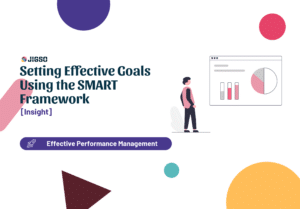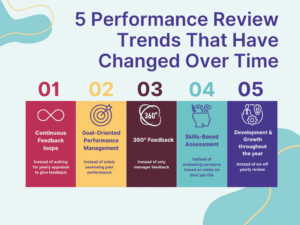People are the most important part of any company. Optimizing the way employees are recruited, utilized, and looked after is something that is always going to benefit the bottom line. This means that investing the necessary effort and resources here is a win-win for the business as well as its people.
However, HR can be a complex and confusing area of business. It’s often seen as expensive, inefficient and a difficult field to get real value from. In order to stay relevant in the modern business world, HR needs to change, and that means making it more accessible and data-driven. Exciting new developments in people analytics have the potential to provide this change and are driving the impressive growth of the field.
Powerful artificial intelligence and machine learning technologies are transforming the way we approach people management, and it’s without a doubt an incredibly exciting time to be involved in HR.
But the potential of people analytics will only be truly realized if the right kind of information is collected and used correctly. Simply gathering and analyzing untargeted data is only going to lead to poor-quality results, but this is unfortunately exactly what’s happening on a regular basis.
A crucial part of any analytics strategy is to first and foremost focus on a business challenge you are facing. From here, it’s far simpler to identify what data and insights you need to provide you with real positive outcomes for the business. Another important thing to remember is that people and HR analytics data shouldn’t be used alone but in combination with more general business performance metrics. This ensures that the true effects of any changes you make can be accurately measured.

How to improve real-world outcomes using People Analytics
Before jumping into analytics, it’s a good idea to think about what areas of the business and workforce you really want to explore and why. Choosing to look at a general workforce metric just because it seems like a good place to start may not, in reality, produce any actionable insights.
Instead, HR investigations should be centered around identifying actual problems. Then, you can work through a logical process to determine what causes it, using analytics tools to assist. HR professionals are ideally suited to this task as they understand workforces better than anyone and can work with different departments to get a variety of perspectives.
Here are seven useful steps to consider when undertaking workforce analytics. Approaching the process in this way can help to make the data you yield more meaningful and provide more actionable insights.
1 – Identify a business challenge
To get actual tangible results from your analytics, it’s important to always focus on a real issue. To start your analytics journey, the first step should be to identify an existing challenge facing your business and how it is damaging progress towards business goals.
You can work with people from across the business to find any issues and gripes that seem to come up regularly. For example, is there a common perception among managers that employee attrition is too high? Attempt to find some evidence that your issue is a genuine problem and that it’s justifiable as an area of study.
2 – Make some assumptions
With a specific challenge now in mind, you can start to figure out what is likely to be causing it and further hone your research strategy. To begin this, try to make some educated assumptions about the causes, as well as what data you are likely to need in order to gain more insight into the problem.
Following the example issue of high employee attrition, a number of factors could be contributory. Maybe workloads are too high, salaries are too low, or employee mobility is lacking when compared with your competitors, all of which can negatively impact motivation and overall engagement.
Also think about how you can gather good data, such as via anonymous surveys, one-on-one meetings and so on.
3 – Use existing data
Think about what information you may already have that relates to the underlying issues you’ve identified and use this data where possible to help inform the analytical process.
Perhaps you have previously carried out workforce surveys which you can compare results with. Any relevant data that can be added into the mix is going to improve the accuracy and usefulness of your analyses.
4 – Predictions and Insights
What sort of insights would be likely to help you make positive changes to the workforce? Are there any insights you already have that you’d like to explore further, or areas that you know nothing about?
Thinking about these things in advance can be helpful when trying to make sense of analytical results further down the line.
5 – Decision making
Try to come up with some HR-related decisions you imagine would benefit the business. Do these decisions have a good chance of directly influencing the specific challenge you’ve identified?
6 – Taking action
Taking into account all the previous steps, try to picture what concrete actions
you’d be able to take at the end of your analytics journey.
For example, if employee attrition is high, some positive actions could be to start offering greater flexibility to employees, hold career conversations, increase transparency on workflow decisions and offer performance-based bonuses.
7 – Results
What results would you want and expect to achieve? Think about whether these relate directly to the challenge you’ve identified and how you could measure this reliably.
Analyzing all manner of workforce-related metrics in an untargeted way can be time-consuming and expensive, and the results confusing. This only acts to add to the issues facing HR professionals and prevents companies from properly looking after their people. To be effective, HR and workforce analytics need to be given the time and investment that they’re worth.
Don’t let the machine decide
By following a planning strategy resembling the above steps and thinking from a solution-centric perspective, businesses can laser-focus their analytics and get prescriptive insights. With this comes the ability to tackle specific challenges and yield effective, measurable results for everyone in the business as well as the bottom line.
The future of people analytics will not only about AI and machine learning. To get the best results, technology needs to be used in combination with strong leadership and a clear business and people strategy. In other words, don’t let the machine decide but use it as an informative tool to drive human decision making and actions.



